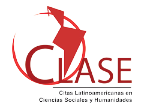Um estudo bibliográfico sobre ligação de entidades
DOI:
https://doi.org/10.5433/1981-8920.2016v21n2p245Palavras-chave:
Processamento de Linguagem Natural, Ligação de Entidades, Revisão de LiteraturaResumo
Introdução: Ligação de Entidades (LE) é um importante tópico de pesquisa que tem atraído recentemente muita atenção de pesquisadores. Na tarefa de LE, menções textuais encontradas em linguagem natural são ligadas à sua entrada correspondente em uma base de conhecimento. Essa tarefa é desafiadora devido a problemas como variação de nomes, ambiguidade das entidades ou porque a entidade mencionada pode não existir na base de conhecimento. Objetivo: Apresentar os problemas relacionados à LE, suas aplicações típicas, bem como sintetizar suas principais abordagens no contexto da ligação de conceitos. Metodologia: Pesquisa de levantamento junto à literatura vigente, para descrição detalhada do estado da arte das abordagens em LE, bem como para a sistematização e categorização das abordagens identificadas. Resultados: A maior parte dos trabalhos propostos para a LE divide esse processo em duas etapas: reconhecimento e ligação de entidades. No entanto, novas propostas têm unificado estas etapas em um único processo. Conclusão: Apesar de mais complexas, as novas abordagens em LE permitem capturar a dependência entre as decisões de Ligação e de Reconhecimento de Entidades minimizando erros e inconsistências. As avaliações deveriam ocorrer em bases de dados unificadas, considerando a dificuldade de comparar resultados de bases de dados distintas devido à influência que estas exercem nos resultados obtidos.
Downloads
Referências
BAEZA-YATES, R.; RIBEIRO-NETO, B. Recuperação de Informação: conceitos e tecnologia das máquinas de busca. São Paulo: Bookman Editora, 2013.
BAKER, C. F.; FILLMORE, C. J.; LOWE, J. B. The berkeleyframenet project. In: PROCEEDINGS OF THE 17TH INTERNATIONAL CONFERENCE ON COMPUTATIONAL LINGUISTICS, Association for Computational Linguistics, v. 1, p. 86-90, August, 1998.
Bayaty, Z. A., Boshra, F., & Joshi, S. (2015, May). Empirical comparative study to supervised approaches for WSD problem: Survey. In Humanitarian Technology Conference (IHTC2015), 2015 IEEE Canada International (pp. 1-7). IEEE.
Benjelloun, O., Garcia-Molina, H., Menestrina, D., Su, Q., Whang, S. E., &Widom, J. (2009). Swoosh: a generic approach to entity resolution. The VLDB Journal—The International Journal on Very Large Data Bases, 18(1), 255-276.
Benton, A., Deyoung, J., Teichert, A., Dredze, M., Van Durme, B., Mayhew, S., & Thomas, M. (2014). Faster (and better) entity linking with cascades. In NIPS Workshop on Automated Knowledge Base Construction.
Bilenko, M., Mooney, R., Cohen, W., Ravikumar, P., & Fienberg, S., Adaptive name matching in information integration. Intelligent Systems, IEEE, 18(5), 1623, 2005
Bizer, C., Lehmann, J., Kobilarov, G., Auer, S., Becker, C., Cyganiak, R., & Hellmann, S. (2009). DBpedia-A crystallization point for the Web of Data. Web Semantics: science, services and agents on the world wide web, 7(3), 154-165.
Bollacker, K., Evans, C., Paritosh, P., Sturge, T., & Taylor, J. (2008, June). Freebase: a collaboratively created graph database for structuring human knowledge. In Proceedings of the 2008 ACM SIGMOD international conference on Management of data (pp. 1247-1250). ACM.
Brizan, D. G., &Tansel, A. U. (2015). A. Survey of Entity Resolution and Record Linkage Methodologies. Communications of the IIMA, 6(3), 5.
Bunescu, R. C., &Pasca, M. (2006, April). Using Encyclopedic Knowledge for Named entity Disambiguation. In Proceedings of European Chapter of the Association for Computational Linguistics (EACL 2006) (Vol. 6, pp. 9-16).
Cao, Z., Qin, T., Liu, T. Y., Tsai, M. F., & Li, H. (2007, June). Learning to Rank: from pairwise approach to listwise approach. In Proceedings of the 24th International Conference on Machine Learning (pp. 129-136). ACM.
Chali, Y., Hasan, S. A., &Joty, S. R. (2009, August). Do automatic annotation techniques have any impact on supervised complex question answering?. In Proceedings of the International Joint Conference on Natural Language Processing (IJCNLP 2009). Conference Short Papers (pp. 329-332). The 47rd Annual Meeting of the Association for Computational Linguistics.
Chandra, G., &Dwivedi, S. K. (2014, December). A Literature Survey on Various Approaches of Word Sense Disambiguation. In Computational and Business Intelligence (ISCBI 2014) 2nd International Symposium on (pp. 106-109). IEEE.
Cheng, D., Knox, C., Young, N., Stothard, P., Damaraju, S., &Wishart, D. S. (2008). PolySearch: a web-based text mining system for extracting relationships between human diseases, genes, mutations, drugs and metabolites. Nucleic acids research, 36(suppl 2), W399-W405.
Cheong, C. (2010). From group-based learning to cooperative learning: A metacognitive approach to project-based group supervision. Informing Science: the International Journal of an Emerging Transdiscipline, 13(1), 73-86.
Christen, P. (2012). A survey of indexing techniques for scalable record linkage and deduplication. Knowledge and Data Engineering, IEEE Transactions on, 24(9), 1537-1555.
Collins, M., & Duffy, N. (2002, July). New ranking algorithms for parsing and tagging: Kernels over discrete structures, and the voted perceptron. InProceedings of the 40th Annual Meeting on Association for Computational Linguistics (pp. 263-270). Association for Computational Linguistics.
Compeau, P, Pevzner, P.. Bioinformatics Algorithms: An Active-Learning Approach. 2nd Edition. Active Learning Publishers. 2015. Volume 1. 384 páginas.
Cornolti, M., Ferragina, P., &Ciaramita, M. (2013, May). A framework for benchmarking entity-annotation systems. In Proceedings of the 22nd international conference on World Wide Web (pp. 249-260). International World Wide Web Conferences Steering Committee.
Craig, M., Horton, D., & Pitt, F. (2010, November). Forming reasonably optimal groups:(frog). In Proceedings of the 16th ACM international conference on Supporting group work (pp. 141-150). ACM.
Culotta, A., & McCallum, A. (2005, October). Joint deduplication of multiple record types in relational data. In Proceedings of the 14th ACM international conference on Information and knowledge management (pp. 257-258). ACM.
Dai, H. J., Tsai, R. T. H., & Hsu, W. L. (2011, November). Entity Disambiguation Using a Markov-Logic Network. In Proceedings of International Joint Conference on Natural Language Processing (IJCNLP 2011) (pp. 846-855).
Dai, H. J., Wu, C. Y., Tsai, R., & Hsu, W. (2012). From entity recognition to entity linking: a survey of advanced entity linking techniques. In Proceedings of the 26th Annual Conference of the Japanese Society for Artificial Intelligence (pp. 1-10).
Dasu, T., & Johnson, T. (2003). Exploratory data mining and data cleaning (Vol. 479). John Wiley & Sons.
Dong, X., Halevy, A., &Madhavan, J. (2005, June). Reference reconciliation in complex information spaces. In Proceedings of the 2005 ACM SIGMOD international conference on Management of data (pp. 85-96). ACM.
Durrett, G., & Klein, D. (2014). A joint model for entity analysis: Coreference, typing, and linking. Transactions of the Association for Computational Linguistics, 2, 477-490.
Efthymiou, V., Stefanidis, K., &Christophides, V. (2015, October). Big data entity resolution: From highly to somehow similar entity descriptions in the Web. In Big Data (Big Data), 2015 IEEE International Conference on (pp. 401-410). IEEE.
Elmagarmid, A. K., Ipeirotis, P. G., &Verykios, V. S. (2007). Duplicate record detection: A survey. Knowledge and Data Engineering, IEEE Transactions on,19(1), 1-16.
Etzioni, O., Cafarella, M., Downey, D., Popescu, A. M., Shaked, T., Soderland, S., ... & Yates, A. (2005). Unsupervised named-entity extraction from the web: An experimental study. Artificial intelligence, 165(1), 91-134.
Fabian, M. S., Gjergji, K., & Gerhard, W. (2007). Yago: A core of semantic knowledge unifying wordnet and wikipedia. In 16th International World Wide Web Conference, WWW (pp. 697-706).
Ferragina, P., &Scaiella, U. (2010, October). Tagme: on-the-fly annotation of short text fragments (by wikipedia entities). In Proceedings of the 19th ACM international conference on Information and knowledge management (pp. 16251628). ACM.
Frisch, M., Klocke, B., Haltmeier, M., &Frech, K. (2009). LitInspector: literature and signal transduction pathway mining in PubMed abstracts.Nucleic acids research, 37(suppl 2), W135-W140.
Ganea, O. E., Horlescu, M., Lucchi, A., Eickhoff, C., & Hofmann, T. (2016). Probabilistic Bag-Of-Hyperlinks Model for Entity Linking. In Proceedings of the 25th International Conference on World Wide Web.
Goker, A., & Davies, J. (Eds.). (2009). Information retrieval: searching in the 21st century. John Wiley & Sons.
Guo, S., Chang, M. W., &Kiciman, E. (2013). To Link or Not to Link? A Study on End-to-End Tweet Entity Linking. In Proceeding of Annual Conference of the North American Chapter of the Association for Computational Linguistics: Human Language Technologies (HLT-NAACL 2013) (pp. 1020-1030)
Guo, Y., Che, W., Liu, T., & Li, S. (2011, November). A Graph-based Method for Entity Linking. In Proceedings of International Joint Conference on Natural Language Processing (pp. 1010-1018).
Han, X., & Zhao, J. (2009, November). Named entity disambiguation by leveraging wikipedia semantic knowledge. In Proceedings of the 18th ACM conference on Information and knowledge management (pp. 215-224). ACM.
Hernández, M. A., &Stolfo, S. J. (1998). Real-world data is dirty: Data cleansing and the merge/purge problem. Data mining and knowledge discovery, 2(1), 937.
Hoffmann, R., & Valencia, A. (2005). Implementing the iHOP concept for navigation of biomedical literature. Bioinformatics, 21(suppl 2), ii252-ii258.
Huang, H., Cao, Y., Huang, X., Ji, H., & Lin, C. Y. (2014, June). Collective Tweet Wikification based on Semi-supervised Graph Regularization. In Association for Computational Linguistics (ACL) (pp. 380-390).
Huber, Torsten. "Entity Linking-A Survey of Recent Approaches." (2012).
Hunter, L., & Cohen, K. B. (2006). Biomedical language processing: what's beyond PubMed?. Molecular cell, 21(5), 589-594.
Huynh, H. M., Nguyen, T. T., & Cao, T. H. (2013, November). Using coreference and surrounding contexts for entity linking. In Computing and Communication Technologies, Research, Innovation, and Vision for the Future (RIVF), 2013 IEEE RIVF International Conference on (pp. 1-5). IEEE.
Jenssen, T. K., Lægreid, A., Komorowski, J., &Hovig, E. (2001). A literature network of human genes for high-throughput analysis of gene expression.Nature genetics, 28(1), 21-28.
Ji, H., &Grishman, R. (2011, June). Knowledge base population: Successful approaches and challenges. In Proceedings of the 49th Annual Meeting of the Association for Computational Linguistics: Human Language TechnologiesVolume 1 (pp. 1148-1158). Association for Computational Linguistics.
Jiang, L., Wang, J., An, N., Wang, S., Zhan, J., & Li, L. (2009, December). Grape: A graph-based framework for disambiguating people appearances in web search. In Data Mining, 2009. ICDM'09. Ninth IEEE International Conference on (pp. 199-208). IEEE.
Joachims, T. (2002, July). Optimizing search engines using clickthrough data. In Proceedings of the eighth ACM SIGKDD international conference on Knowledge discovery and data mining (pp. 133-142). ACM.
Kalloubi, F., El Habib, N., & El Beqqali, O. (2014b, November). Graph based tweet entity linking using DBpedia. In Computer Systems and Applications (AICCSA), 2014 IEEE/ACS 11th International Conference on (pp. 501-506). IEEE.
Kalloubi, F., Nfaoui, E. H., & El Beqqali, O. (2014a, May). Named entity linking in microblog posts using graph-based centrality scoring. In Intelligent Systems: Theories and Applications (SITA-14), 2014 9th International Conference on (pp. 1-6). IEEE.
Kang, H., Getoor, L., Shneiderman, B., Bilgic, M., &Licamele, L. (2008). Interactive entity resolution in relational data: A visual analytic tool and its evaluation. Visualization and Computer Graphics, IEEE Transactions on, 14(5), 999-1014.
Kaur, D., & Gupta, V. (2010). A survey of named entity recognition in english and other indian languages. IJCSI International Journal of Computer Science Issues, 7(6), 1694-0814.
Krauthammer, M., &Nenadic, G. (2004). Term identification in the biomedical literature. Journal of biomedical informatics, 37(6), 512-526.
Kyprianidou, M., Demetriadis, S., Tsiatsos, T. andPombortsis, A. 2011. Group formation based on learning styles: can it improve students' teamwork? Educational Technology Research and Development. 60, 1 (Sep. 2011), 83- 110.
Laek, I., &Vojta, P. (2012, December). Context Aware Named Entity Disambiguation. In Web Intelligence and Intelligent Agent Technology (WI-IAT), 2012 IEEE/WIC/ACM International Conferences on (Vol. 1, pp. 402-408). IEEE.
Lai, P. T., Bow, Y. Y., Huang, C. H., Dai, H. J., Tsai, R. T. H., & Hsu, W. L. (2009, August). Using contextual information to clarify gene normalization ambiguity. In Information Reuse & Integration, 2009. IRI'09. IEEE International Conference on (pp. 1-5). IEEE.
Leitner, F., Mardis, S. A., Krallinger, M., Cesareni, G., Hirschman, L. A., & Valencia, A. (2010). An overview of BioCreative II. 5. Computational Biology and Bioinformatics, IEEE/ACM Transactions on, 7(3), 385-399.
Lenzerini, M. (2002, June). Data integration: A theoretical perspective. In Proceedings of the twenty-first ACM SIGMOD-SIGACT-SIGART symposium on Principles of database systems (pp. 233-246). ACM.
Li, Y., Yang, X., & Luo, J. (2015). Semantic Video Entity Linking Based on Visual Content and Metadata. In Proceedings of the IEEE International Conference on Computer Vision (pp. 4615-4623).
Lin, T., &Etzioni, O. (2012, June). Entity linking at web scale. In Proceedings of the Joint Workshop on Automatic Knowledge Base Construction and Web-scale Knowledge Extraction (pp. 84-88). Association for Computational Linguistics.
Liu, X., Li, Y., Wu, H., Zhou, M., Wei, F., & Lu, Y. (2013). Entity Linking for Tweets. In Association for Computational Linguistics (ACL 2013) (1) (pp. 13041311).
Luo, G., Huang, X., Lin, C. Y., &Nie, Z. Joint named entity recognition and disambiguation. In Proceedings of the Empirical Methods in Natural Language Processing. 2015.
Maglott, D., Ostell, J., Pruitt, K. D., &Tatusova, T. (2005). Entrez Gene: genecentered information at NCBI. Nucleic acids research, 33(suppl 1), D54-D58.
Maier, H., Döhr, S., Grote, K., O'Keeffe, S., Werner, T., de Angelis, M. H., & Schneider, R. (2005). LitMiner and WikiGene: identifying problem-related key players of gene regulation using publication abstracts. Nucleic acids research, 33(suppl 2), W779-W782.
Marrero, M., Sánchez-Cuadrado, S., Lara, J. M., &Andreadakis, G. (2009). Evaluation of named entity extraction systems. Advances in Computational Linguistics, Research in Computing Science, 41, 47-58.
Metzler, D., & Croft, W. B. (2007). Linear feature-based models for information retrieval. Information Retrieval, 10(3), 257-274.
Mihalcea, R., &Csomai, A. (2007, November). Wikify!: linking documents to encyclopedic knowledge. In Proceedings of the sixteenth ACM conference on Conference on information and knowledge management (pp. 233-242). ACM.
Miller, G. A., Beckwith, R., Fellbaum, C., Gross, D., & Miller, K. J. (1990). Introduction to wordnet: An on-line lexical database*. International journal of lexicography, 3(4), 235-244.
Milne, D., & Witten, I. H. (2008, October). Learning to link with wikipedia. In Proceedings of the 17th ACM conference on Information and knowledge management (pp. 509-518). ACM.
Moro, A., Cecconi, F., &Navigli, R. (2014b, October). Multilingual word sense disambiguation and entity linking for everybody. In Proceedings of the 2014 International Conference on Posters & Demonstrations Track-Volume 1272 (pp. 25-28). CEUR-WS. org.
Moro, A., Raganato, A., &Navigli, R. (2014a). Entity linking meets word sense disambiguation: a unified approach. Transactions of the Association for Computational Linguistics, 2, 231-244.
Nadeau, D., &Sekine, S. (2007). A survey of named entity recognition and classification. LingvisticaeInvestigationes, 30(1), 3-26.
Nguyen, H. T., & Cao, T. H. (2008, July). Named entity disambiguation on an ontology enriched by Wikipedia. In Research, Innovation and Vision for the Future, 2008. RIVF 2008. IEEE International Conference on (pp. 247-254). IEEE.
Nural, M. V., Miller, J. A., &Arpinar, I. B. (2013, September). Improving Entity Linking Performance Using Frame Semantics. In Semantic Computing (ICSC), 2013 IEEE Seventh International Conference on (pp. 56-63). IEEE.
Olieman, A. M., e Nack, F. "Mastery Profiling through Entity Linking to Support Project Team Formation in Higher Education". 6th International Conference on Computer Supported Education (CSEDU14), 2014.
Ounnas, A. 2010. Enhancing the Automation of Forming Groups for Education with Semantics. PhD. Thesis. University of Southampton.
Ounnas, A., Davis, H. C., & Millard, D. E. (2009). A Framework for Semantic Group Formation in Education. Educational Technology & Society, 12(4), 43-55.
Perera, S., Mendes, P. N., Alex, A., Sheth, A. P., &Thirunarayan, K. "Implicit Entity Linking in Tweets". Extended Semantic Web Conference, 2016.
Peri, S., Navarro, J. D., Kristiansen, T. Z., Amanchy, R., Surendranath, V., Muthusamy, B., ... & Rashmi, B. P. (2004). Human protein reference database as a discovery resource for proteomics. Nucleic acids research, 32(suppl 1), D497-D501.
Phelan, O., McCarthy, K., & Smyth, B. (2009, October). Using twitter to recommend real-time topical news. In Proceedings of the third ACM conference on Recommender systems (pp. 385-388). ACM.
Pu, K. Q., Hassanzadeh, O., Drake, R., & Miller, R. J. (2010, October). Online annotation of text streams with structured entities. In Proceedings of the 19th ACM international conference on Information and knowledge management (pp. 29-38). ACM.
Rao, D., McNamee, P., &Dredze, M. (2013). Entity linking: Finding extracted entities in a knowledge base. In Multi-source, Multilingual Information Extraction and Summarization (pp. 93-115). Springer Berlin Heidelberg.
Raykar, V. C., Krishnapuram, B., & Yu, S. (2010, July). Designing efficient cascaded classifiers: tradeoff between accuracy and cost. In Proceedings of the 16th ACM SIGKDD international conference on Knowledge discovery and data mining (pp. 853-860). ACM.
Rebholz-Schuhmann, D., Kirsch, H., Arregui, M., Gaudan, S., Riethoven, M., &Stoehr, P. (2007). EBIMed—text crunching to gather facts for proteins from Medline. Bioinformatics, 23(2), e237-e244.
Santos, J. T. L., Anastacio, I. M., & Martins, B. E. (2015). Named Entity Disambiguation over Texts Written in the Portuguese or Spanish Languages. Latin America Transactions, IEEE (Revista IEEE America Latina), 13(3), 856862.
Sarawagi, S., &Bhamidipaty, A. (2002, July). Interactive deduplication using active learning. In Proceedings of the eighth ACM SIGKDD International Conference on Knowledge Discovery and Data Mining (pp. 269-278). ACM.
Sayers, E. W., Barrett, T., Benson, D. A., Bryant, S. H., Canese, K., Chetvernin, V., &Feolo, M. (2009). Database resources of the national center for biotechnology information. Nucleic acids research, 37(Database issue), D5.
Sharnagat, Rahul. "Named Entity Recognition: A Literature Survey." unpublished (2014).
Shen, W., Wang, J., Luo, P., & Wang, M. (2013, August). Linking named entities in tweets with knowledge base via user interest modeling. In Proceedings of the 19th ACM SIGKDD international conference on Knowledge discovery and data mining (pp. 68-76). ACM.
Shen, W., Wang, J., & Han, J. (2015). Entity linking with a knowledge base: Issues, techniques, and solutions. Knowledge and Data Engineering, IEEE Transactions on, 27(2), 443-460.
Sil, A., & Yates, A. (2013, October). Re-ranking for joint named-entity recognition and linking. In Proceedings of the 22nd ACM international conference on Conference on information & knowledge management (pp. 23692374). ACM.
Smith, T. F. e W., M. S. (1981). "Identification of Common Molecular Subsequences" (PDF). Journal of Molecular Biology 147: 195-197. doi:10.1016/0022-2836(81)90087-5. PMID 7265238.
Wang, T., Kou, Y., Shen, D., Liu, H., & Yu, G. (2014, September). SIER: An Efficient Entity Resolution Mechanism Combining SNM and Iteration. In Web Information System and Application Conference (WISA), 2014 11th (pp. 238241). IEEE.
Witten, I. H. e Frank, E. Data Mining: practical machine learning tools and techniques. 2ª Edição - (2005). Morgan Kaufmann series in data management systems. ISBN: 0-12-088407-0
Witten, I., & Milne, D. (2008, July). An effective, low-cost measure of semantic relatedness obtained from Wikipedia links. In Proceeding of AAAI Workshop on Wikipedia and Artificial Intelligence: an Evolving Synergy, AAAI Press, Chicago, USA (pp. 25-30).
Wu, W., Li, H., Wang, H., & Zhu, K. Q. (2012, May). Probase: A probabilistic taxonomy for text understanding. In Proceedings of the 2012 ACM SIGMOD International Conference on Management of Data (pp. 481-492). ACM.
Xu, J., & Li, H. (2007, July). Adarank: a boosting algorithm for information retrieval. In Proceedings of the 30th annual international ACM SIGIR conference on Research and development in information retrieval (pp. 391398). ACM.
Yang, Y., & Chang, M. W. S-MART: Novel Tree-based Structured Learning Algorithms Applied to Tweet Entity Linking. In Proceedings of the 7th International Joint Conference on Natural Language Processing (IJCNLP 2015), The 53rd Annual Meeting of the Association for Computational Linguistics, p. 504-513, 2015.
Yao, Y., & Sun, A. "Product name recognition and normalization in internet forums." Special Interest Group Symposium on Information Retrieval in Practice (SIGIR Industry Track). 2014.
Zheng, J. G., Howsmon, D., Zhang, B., Hahn, J., McGuinness, D., Hendler, J., & Ji, H. (2015). Entity linking for biomedical literature. BMC medical informatics and decision making, 15(Suppl 1), S4.
Zuo, Z., Kasneci, G., Gruetze, T., &Naumann, F. (2014). BEL: Bagging for Entity Linking. In Proceedings of The 25th International Conference on Computational Linguistics (COLING 2014). (pp. 2075-2086).
Downloads
Publicado
Como Citar
Edição
Seção
Licença
Copyright (c) 2021 Informação & Informação

Este trabalho está licenciado sob uma licença Creative Commons Attribution 4.0 International License.
A revista se reserva o direito de efetuar, nos originais, alterações de ordem normativa, ortográfica e gramatical, com vistas a manter o padrão culto da língua e a credibilidade do veículo. Respeitará, no entanto, o estilo de escrever dos autores. Alterações, correções ou sugestões de ordem conceitual serão encaminhadas aos autores, quando necessário.
O conteúdo dos textos e a citação e uso de imagens submetidas são de inteira responsabilidade dos autores.
Em todas as citações posteriores, deverá ser consignada a fonte original de publicação, no caso a Informação & Informação.














